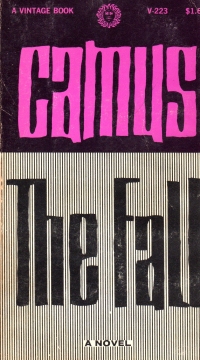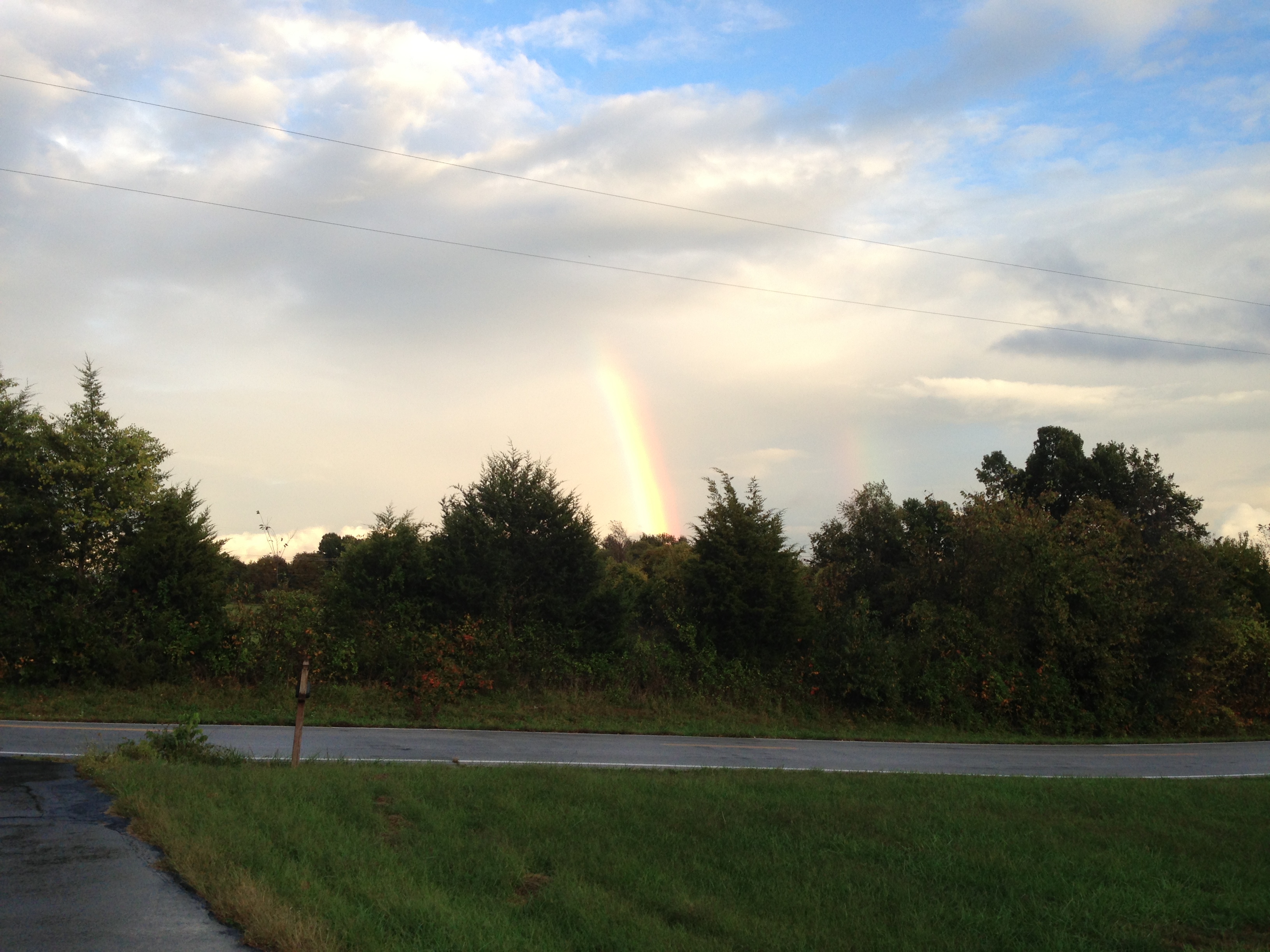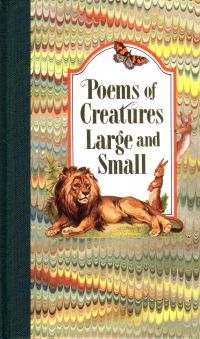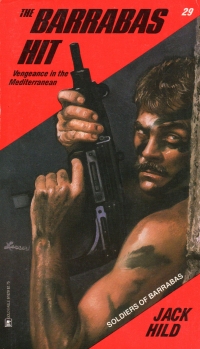An off-duty Chicago Police sergeant was beaten and had his service weapon stolen during a robbery Thursday afternoon in the Loop.
If anyone needs me, I’ll be out working on Nogglestead’s moat.
To be able to say "Noggle," you first must be able to say "Nah."
An off-duty Chicago Police sergeant was beaten and had his service weapon stolen during a robbery Thursday afternoon in the Loop.
If anyone needs me, I’ll be out working on Nogglestead’s moat.
The very things that irritate me most in the day-to-day living are the first things I forget tomorrow.
I just wish knowing this would make me less irritated today.
 This book looks enough like something that Henry Beard would write that I thought maybe they were the same guy (until I looked at a Henry Beard book and saw his name was Henry and not Alan). I thought maybe they were related. It appears not. They’re only in the same vein of humor.
This book looks enough like something that Henry Beard would write that I thought maybe they were the same guy (until I looked at a Henry Beard book and saw his name was Henry and not Alan). I thought maybe they were related. It appears not. They’re only in the same vein of humor.
This book presents a series of Twitter messages–tweets– that historical figures might have sent. It’s akin to a number of lists you’ve already read on the Internet.
So it’s quick and it’s clever in places, but there’s nothing especially revelatory about history, nor does the humor last with you after you turn the page.
But it counts as a book I read this year, so there.
Worth a buck at a book fair, but please don’t give me the 2015 desk calendar for Christmas.
Books mentioned in this review:
Amazon has a new benefit for its Prime members: Shipping costs.
With new Prime Pantry, people who receive free shipping with their Prime membership now get the chance to pay $6 shipping on a box of household staples.
A real reporter asked Amazon about it, and the Amazon spokesperson was a bit coy:
So I asked an Amazon spokeswoman to explain the program’s benefits to shoppers. She mentioned the exclusivity of the program — it’s only available to Prime members; the fact that you’re getting some heavy items delivered to your door; and that shoppers are getting “low prices on everyday essentials in everyday sizes.”
Uh huh. I’m willing to pay $6 shipping just because I’m one of the privileged few who pay an annual fee to get free shipping and then get the privilege to pay the shipping and handling.
Here’s a bold prediction you’ll find everywhere else: Amazon Prime will evolve out of its actual benefit of offering free shipping on Amazon purchases to merely streaming content and giving its members exclusive access to a box that you can see filling up as you add items to your shopping cart. Here’s another prediction: When that happens, I’ll no longer be a Prime member and I won’t shop on Amazon by default any more.
 I picked up this book, and I was all like, “Shazam, how different are these titles in the same series?” For lo, although the book started out with a bit of gratuitous hey, sailor contact for grandfathers everywhere, the paragraphs were longer, deeper, and richer than I could have expected. But then I realized I’d confused this, a volume in the Longarm series, with the entry in the Gunsmith series that I’d read earlier. And they’re night and day.
I picked up this book, and I was all like, “Shazam, how different are these titles in the same series?” For lo, although the book started out with a bit of gratuitous hey, sailor contact for grandfathers everywhere, the paragraphs were longer, deeper, and richer than I could have expected. But then I realized I’d confused this, a volume in the Longarm series, with the entry in the Gunsmith series that I’d read earlier. And they’re night and day.
In this book, Longarm is a Federal marshal sent from his normal Colorado range to Laredo, Texas, to investigate a fellow Federal marshal who might have gone bad and might be helping crooked local authorities in smuggling operations. So Longarm picks up an unlucky gambler traveling partner and heads down to pose as a merchant who can happen to come across a large number of Federal weapons to sell.
As I mentioned, the book is deeper and richer in prose and its set pieces take a little work. It’s got some, er, amorous scenes, but it’s also got its limits in that area; there are apparently some women the main character won’t touch. Additionally, the book reads like a Western with its painting of frontier towns and–who would think it?– concerns about horses and transporting horses.
So I liked it as a lighter read, and its linear story telling allowed me to put it down and not have to go back to see if I’d forgotten a three page jump cut scene with important information that I’d read and forgotten the night before.
So as I get older, I’m finding myself looking forward to good genre fiction and classic literature for pleasure reading than modern thrillers and detective novels. Fortunately for me, there is plenty of both on my to-read shelves. Also, should I want to get into this series, it’s apparently still in production 20 years after the release of this book, the 174th in the series. It’s up to 436 novels done or in planning, 30 Giant novels, and 4 Double novels (according to Fantastic Fiction). So I’ll keep my eyes open for these titles at the book sales in Ozark and in Clever. And someday I’ll gut out others I own in the Gunsmith series. When I need penance for something.
Books mentioned in this review:
Yesterday, I shamed myself before fellow volunteers at the Friends of the Springfield-Greene County Library book sale. Because I regaled them with tales of how many books I bought at book sales and because I told them I was restraining myself this time. I did neither; I came back for books, and I only bought a couple.
I got:
An interesting smörgåsbord, as Leif and Thorkel might say if they were Swedish boys of long ago instead of ancestors of a-ha fans.
I feel a little justified at only buying 20 books for myself (one of those depicted is a gift) as I’ve read more than 20 books this year. Of course, I’ve bought more books than I’ve read this year, but I’ll never go without having a variety of choices when selecting a new book to read. If only I could capture the interest and excitement I get when buying the book when I go to select the books; sometimes, that excitement and interest fades after time, so I’m not going to be as eager to delve into a tale of old Norway in March 2015 as I am today, but I’ve already got other things to read. Alas. Ay, me.
In 2010, I reported on Don Pendleton’s Copp on Fire.
This week, Randy Johnson (not the baseball player) reviewed it.
Short answer, as though you need a shortened version of two pretty short book reviews: We both liked it.
It’s been a bad season for the local book fairs and Brian J. I missed the one in Clever because I didn’t know when it was (although since I’m a Friend of the Clever Library, I probably got a notification that I discarded). I missed the Christian County Library book sale due to car problems. But I managed to sneak off to the Friends of the Springfield-Greene County Library book sale yesterday.
Strangely, this one is at the upper limit of my size preference. There’s a lot to look at, and it would take hours to browse all the tables. So I headed to the LPs and went around the Classics and local books sections of the $1 books.
Here’s what I got:
I got 23 LPs, including:
And I got a boxed set of Bach’s Mass in D Minor.
I don’t mind throwing a dollar for an album by someone I don’t know; many of these, I’ll only listen to once and then only sporadically. However, I might find something I like and will not only listen to over and over again, but I’ll keep an eye out for other records (and other music formats) in the future. It explains why I have a pile of Eydie Gorme and Herb Alpert CDs and records.
At any rate, I didn’t let you down: I did buy some books, including:
I don’t know if I’ll make it back tomorrow (Saturday, half price day). It’s not like I need more books, and this particular sale is more important to me for the LPs these days anyway.
 I picked up this book because it was sure to be more weighty than the other things I’ve been reading recently, and so it was.
I picked up this book because it was sure to be more weighty than the other things I’ve been reading recently, and so it was.
The book is a short novel told in flashback by a reliable narrator. The first person narrator is a former Parisian lawyer who now haunts a bar called Mexico City in the red light district of Amsterdam. The narrator talks to a new visitor to the bar and, over the course of a number of nights and trips around Amsterdam, tells his story: He was a successful, had many mistresses, was respected, and demonstrated philanthropy until a single event called him to question himself, at which time he no longer felt the success he wanted to be and tried to show he was. He eventually ends up in this bar, telling his stories to try to knock other successful people off of their game as well.
Of course, the story told in flashback by an unreliable narrator makes it easy to dismiss his stories, but the book does illustrate a certain tension between a Dale Carnegie outlook and that of the Existentialist. That is, a Dale Carnegie self builds itself into greatness and might find happiness by striving to be better and experiencing setbacks, whereas the Existentialist might be going along all right until something triggers the Existentialism, the sense that the creation of the self is hypocrisy. I’m being a bit twee here, but I’m identifying two types of self-conscious personality types, people who think about who they want to be and either try to be it or do not. Of course, another personality type that is not so self-conscious exists and just does what it does, whether it’s Randian Triumph or Moochery or just people who go through their lives doing their things. Maybe I’m philosophizing a little glibly here and broadly talking about types of people who do not exist.
At any rate, it does show the defeatist Existential response to resistance in self-definition. Given the nature of the narrator, it’s not a ringing endorsement of this point of view, but it’s not an indictment of it, either. More of a description.
One can’t help compare this book to Jean-Paul Sartre’s Nausea; in that book, a historian eventually has his Existentialist trigger moment, but it’s just thought-based, whereas in The Fall, it is the narrator’s reaction to an event (or events) that triggers his pessimism. Ergo, it’s a much more approachable and true-to-life book. Of course, it’s been twenty years since I read Nausea, so I might be describing my experienced flavor of it instead of the book itself, so your mileage may vary.
At any rate, it’s a short little novel, as the Existentialists were wont, and it does give one some things to think about regarding consciousness, our self-images, and their relationships to the world. Which is never a bad thing, unless one goes the full Existentialist and starts feeling the need to compliment Sartre.
Books mentioned in this review:
Back in the 1980s, which is well nigh 30 years ago, and since it’s before the Internet it might as well prehistoric, we would buy computer magazines with programs in them. And we’d type them in.
You see, storage for computers at the time was strange; you could have a floppy drive, you might have a cassette recorder where you recorded stuff to tape in audio beeps and boops that you could load back into the computer by playing the cassette, or you might not have any storage at all and your computer’s memory might go blank when you turned it off.
Oh, those were heady days. You could buy games and whatnot on disk or cartridge, but you could also buy a magazine with a bunch of programs in it and type them in yourself.
You see, we had no Internet back then. Heck, in the middle of the 1980s, we didn’t even have cable television down the gravel road I lived on. So there was a lot of time to type these things in, try to run them, and then hunt for typos. When you were done, you had something rudimentary that you would play once or twice and then stick on a disk and never play it again.
The magazines had their little helper programs, too, to help you with the program typing. Most had some sort of automatic checker program; you’d type in (and then save and load as needed). You’d then run that program and type the lines of the BASIC programs in the magazine within the helper program, and a little checksum would indicate if the line was horribly awry. Or they’d have a little BASIC program for loading machine language programs, so you could spend hours typing something like the above into the computer and (hopefully) have something interesting on the other end.
Man, I sure did have a lot of time on my hands as a young man, but I had no job, no where to go, no cable, a party line that prevented dial-up computer access, and a Commodore 128.
Now, as an old man, I still have those magazines stashed where I can get them quickly as well as a number of Commodores I could hook up to run the programs. As to the programs themselves, the ones I wanted to type in back in the day are still on their floppies with the C64s. If I had just a fraction of the time I had in my youth, I would dig them out to play with them again.
 With this book, I decide I don’t like Ace Atkins’ books very much.
With this book, I decide I don’t like Ace Atkins’ books very much.
This is one in his Nick Travers line of books. Travers is a former New Orleans Saints linebacker who becomes a college professor, one who teaches only a class or two and spends most of his time researching blues music and interviewing old blues musicians. And doing favors for friends, favors of an investigative nature. Also, he becomes a bar owner during the course of the book and begins rehabbing/resuscitating his favorite blues bar. Also, he’s seeing a woman in Mississippi, but he spends a lot of time in New Orleans away from her, especially while on this case.
A fellow former football player, now a rap record mogul, turns to Nick when the new fifteen-year-old sensation is ripped off and when the rap mogul needs to come up with a large amount of cash to satisfy a loan from another rap mogul. So Travers looks into it amidst the other series business.
This book include the flaws I didn’t care for in The Lost Ones and Cheap Shot. Chief amongst them is how much of the book is spent on the series business and not on the efforts of Travers to solve the problem at hand. He gets a dog. He meets with his girlfriend, but she does not serve as a philosophical foil a la Spenser’s Susan Silverman. He kind of tries to mentor the fifteen-year-old by taking him to a friend’s farm, where he’s expected to do manual work to find himself (compare to Robert B. Parker’s Early Autumn). He gets ownership of a bar and works on it with friends; its opening serves as the triumphant end book. Most of these things do not apply to the actual plot of the book.
A good book, and a good series book, works the plot first and then a little bit of series growth and movement as the plot unfolds. In this book and others in Atkins ones I have read recently, the overarching movement of the series occurs at the same time and independently of the actual individual book’s plot. I’m not sure you even saw that in the late Parker as starkly as you see it here. Perhaps it’s the 21st century way–I don’t read that many modern series, as you know.
Also, this book offers three points of view: The first person of Nick Travers; a third person limited omniscient focus on one of the bad guys in scenes to show us how bad he is; and the first person of the fifteen-year-old. The perspective of the fifteen-year-old and all the scenes there only give us the flavor of his perspective and don’t advance the plot. The third person of the bad guy only serves to show us how bad he is. Well, okay, they show a little of relationships that prove important to the plot, but the scenes aren’t really necessary to show the relationships. They don’t even really humanize the bad guy or add depth to him; they just illustrate he’s a bad guy. And he’s just a level boss, not the big bad guy..
I’m not sure whether these extra scenes and extra points-of-view merely padd the book up to hardback size or if they’re intended as what my fiction professor told our workshop were nice little moments. But they slow the book down quite a bit.
Additionally, the book is built out of short chapters jumping around amongst the points of view and into and out of the plot. This doesn’t suit my current reading style, which is just a brief twenty or thirty minute session at night before bed. I found myself having to re-read preceding chapters to ensure that I hadn’t forgotten something out of left field that I’d read the night before. With a more linear book, I can recap by simply finding my place in the book.
At any rate, I only picked this book up because I dropped by the library when I was going to have an hour available for reading and nothing to read on hand. Unfortunately, I didn’t find a short history summary book and ended up with this book. Next time, I will try harder. Or make sure I’ve got a paperback in reach at all times.
Books mentioned in this review:
I’m pretty sure I have seen more rainbows in my five years at Nogglestead than I did in my life to that point.

I’ve mentioned before, or at least I think I have, that out in the country, you really see how the sunrise and sunset move north and south on the horizon during the seasons. Here, I know where to look for rainbows, too, because they display in the same place.
I’m sure there are motivational poster worth bits of life lessons here. That living in the country might alter your perceptions because you have distant horizons instead of buildings across the street and such. Unfortunately, these truths can be rendered twee in the repeating and the phrasing. One must experience for one’s self to get the meaning.
And by “raffle,” I mean gun raffle:

Somebodies will gasp when they discover that one of the raffles is the local EMTs that are raffling off a gun. Guns are dangerous! And they’re EMTs!
Down here in Southwest Missouri, away from the cities on the east and west coast of the state, even the EMTs are not scared of guns as talismans of danger.
Because, really, what could they give away that’s safer? A bike? A car? A home with a bathroom in it?
Robert A. Heinlein said:
A human being should be able to change a diaper, plan an invasion, butcher a hog, conn a ship, design a building, write a sonnet, balance accounts, build a wall, set a bone, comfort the dying, take orders, give orders, cooperate, act alone, solve equations, analyze a new problem, pitch manure, program a computer, cook a tasty meal, fight efficiently, die gallantly. Specialization is for insects.
(See how I scored here.)
However, there’s a new gauge in town, and I like it a tad better:
Can you change oil. Tie knots. Build furniture. Cut grass. Drive a moving van. Rent a moving van. Build a suite of software regression tests. And, how do you react if your girlfriend said you remind her of the famous actor, [blank]. John Wayne. Clark Gable. Leonardo DiCaprio. Gary Cooper. Hugh Grant. Clint Eastwood. Tyrone Power. Russell Brand. Errol Flynn.
Holy cats, I can do all that stuff, especially the software regression test suites. And if my beautiful wife says I remind her of Cary Grant, well, I’m working on it.
“Milky substance” that contaminated creek may have been — milk
Note that the film, Dragnet. from 1987 features police officers in military gear. Come to think of it, Die Hard from 1988, did, too. So that’s been going on a long time, ainna?
 This book is not the first in this series of grouped short poetry anthologies I’ve read; in 2007, I read Poems of Flowers and Poems of Friendship shortly after finding them at an Old Trees estate sale. I picked up the current volume at a thrift store about a week ago. I like these slim little anthologies that I read them quickly.
This book is not the first in this series of grouped short poetry anthologies I’ve read; in 2007, I read Poems of Flowers and Poems of Friendship shortly after finding them at an Old Trees estate sale. I picked up the current volume at a thrift store about a week ago. I like these slim little anthologies that I read them quickly.
As with the other volumes, this slim (65) page volume collects mostly public domain poems on a theme. This time, it’s animals, so all of the poems are about animals (Tiger, tiger, burning bright? It’s in there.). As always, the poems vary in style and, honestly, quality, but it does offer a bit of a buffet approach to a number of styles and poets from Whitman to Wordsworth to a lot of Bret Harte.
I know, I know, Don’t you have an English degree? Shouldn’t you be reading Real Volumes of Poetry? Oh, but no. I’m currently into my third decade of trying to read the complete works of Emily Dickinson, friends, and I’m here to tell you that poetry is supposed to delight and entertain. It’s supposed to be deep pop music. Pleasing to the ear and conveying deep meaning. Like so much art, it got corrupted by critics and poetasters so that too much of it is either too ponderous to be appreciated by normal people or just twee without any deeper resonance. Give me a K-Tel collection of poems like this any day over the complete works of Wallace Stevens.
I liked this collection so much that I’m considering looking into how many Gail Harvey edited in this series and seeking out the others. Fortunately, the intersection of my laziness and otherwise busy day will intercede and prevent me from adding any more to my sagging shelves other than the upcoming autumn book sales and occasional trip to the thrift store.
Books mentioned in this review:
Google Announces “_nomap” WiFi Opt-out Option, Wants Other Location Providers To Go Along:
As promised, Google has announced a way for WiFi router owners to stop Google from including them in the company’s location database.
The opt-out requires a change in the name of the wireless network (the SSID) to include _nomap at the end of the name. In other words, if your wireless network is named “McGeehome,” you’d need to rename that to “McGeehome_nomap.” (And frankly, I’d prefer you use your own last name while you’re at it.)
Google is thoughtfully allowing you to change your internal naming of your personal property to keep Google from using it for its own data collection and profit.
Because your property and information belongs to Google unless you explicitly say it does not. Even if you don’t use Google. Because anything Google can dig up, it can use.
(Link via tweet.)


I picked up these books in Clever this spring for something to flip through during football games. And so I did.
The first, Bomun Temple in Seoul Korea, is an inexpensive tourist trinket for visitors of a Buddhist temple in Seoul, South Korea. It’s a set of photos with captions bound with string, and it includes errata such as the same page appearing twice. It focuses on the artifacts and architecture of a single temple, so it’s pretty in-depth.
The second, Wonderful Korea, is broader. It’s broken into sections by province or geographic region and has a couple photos of different temples, pagodas, parks, and museums. As such, it focuses on things you can see all over Korea. It’s broken down into districts within Korea and highlights some of the things to visit in those areas. The area around Seoul is heavily represented, and the locations are given a couple of images and sometimes a couple of artifact images, but it is by design not very detailed about any one location. The book also includes a number of maps to help you get around Korea and the districts in each chapter, and amid all of the eastern architecture and art, there are dots on the map for the local YWCA. Which would now be historic, but were then contemporary.
Takeaways from flipping through:
Still, I’m glad to have looked through them. I have a couple more from that score this spring and I’ll keep you apprised as I go through them, but I imagine my reaction will be similar.
Books mentioned in this review:
 So close after reading Designation Gold, I picked up this book to really juxtapose and contrast the Marcinko books with more common men’s adventure fiction.
So close after reading Designation Gold, I picked up this book to really juxtapose and contrast the Marcinko books with more common men’s adventure fiction.
This book finds Barrabas set up and kidnapped in Athens by a former associate who blames Barrabas and the SOBs for a botched operation that left him disfigured. Once he has Barrabas locked in a basement on a Greek island, the man now going by Joshua leaves a trail for the SOBs to follow to lead them to his island–and an ambush.
The book starts out with the operation that went bad and then seemingly tries to play up the mystery of who this “Joshua” is. Perhaps the scene at the beginning was added later. It’s a quick read, of course, and interesting and consumable in that men’s adventure novel way.
Where I dinked the Marcinko and Weisman book about the non-first person narrator characters for seeming like NPCs, this book uses third person, so many of the characters come across that way, too. The good guys and the named bad guys are interchangeable but for a characteristic. O’Toole is the Irish one, Billy Two is the Indian one, Lee is the woman one, and so on. The plot is thinner and more straight forward than the more modern thriller (although there are only eight years that separate these two books, one is patterned on the thriller and one on the adventure novel).
At any rate, they’re different books and they suit different audiences or moods. But I experienced the flavor of each and, as I said, got the contrast acutely.
I’ve got a couple more SOBs books (and keep accumulating men’s adventure novels), and I’ll get to them as the mood strikes. The SOB books aren’t as good as the old Pendleton Executioner books, but they’re not dumpster diving like some of the paperback series are.
Books mentioned in this review:
I swear, I did not mean to acquire a couple stacks of books today. We went to Republic’s Pumpkin Daze, a fall harvest festival with crafts, large vegetables, and funnel cakes, for a little while yesterday afternoon.
One of the booths featured retired educational professionals raising money for local scholarships. They did this by selling books. As we were late in the day, they offered everything you could fit into a bag for a buck.
So I did.
The booth featured a lot of vintage science fiction paperbacks, so I helped myself. Here’s a partial list of what I got:
&c.
Wow, what a collection. I’m looking forward to getting started on them.
And the total for my two stacks, my beautiful wife’s stack, and the sole book picked out by my oldest son, was $4 because I double-bagged our two sacks.